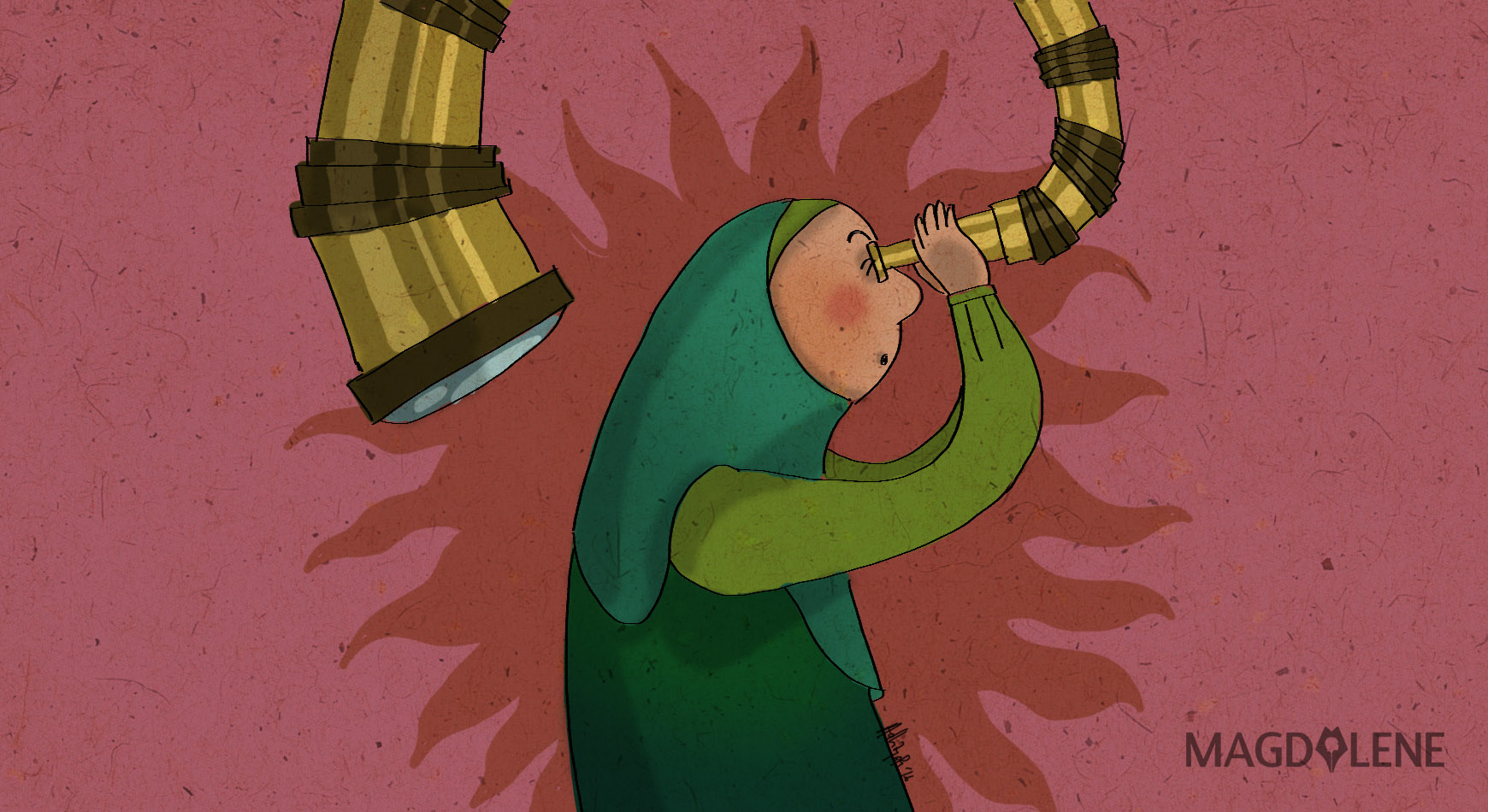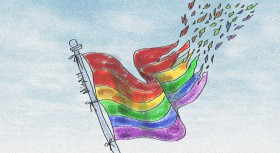Social media make it possible to see our past on daily basis, and both the elderly and the youth like to see accounts feeding 20th century Indonesian photos for different reasons: nostalgia and recollection for the elderly, inspiration and new discovery for the youth.
Attracting attention in particular is how Indonesian women dressed in the past, from shoulder-less kemben and batik sarong in the first half of the 20th century, to miniskirts in the 1970s. For many Indonesians, these pictures signify an ideal past, supposedly a more liberal era compared to today, when more women wear hijab and sharia-compliant outfit at work.
Such comparison reminds me of online pictures showing Iranian and Afghan women in the 1970s in miniskirts or bikinis, their hair flowing freely and often holding a glass of wine, or a man’s chest. Such as different world to today’s Iran and Afghanistan.
Those pictures, however, are more than nostalgia. Like many other memes today, they contain a message intended by their sender. The Iranian old pictures were distributed by pro-monarchy Iranian diaspora in Europe and United States to romanticize the imperial era that ended in 1979, and to contrast it with the current Islamic Republic. These monarchists had criticized the Obama administration for improving relations with Iran, and welcome the current American hostility against Tehran.
I am not sure with the message behind the old pictures of Afghanistan. Probably they came from Afghan diaspora who longed for a paradise lost, before the Soviet Union occupation in the 1980s and the ongoing Taliban-led calamity since the 1990s. But in US and Indonesia, those images were popular among Christians who long for a secular, Western-friendly, and non-threatening Muslim society.
The old pictures of Indonesian women have different appeals to different groups of Indonesians except the conservative Muslims. Some women say they don’t mind working in kebaya and sarong – better air circulation, more colorful, and works as an alternative to Western-centric wardrobe. For others the pictures were an ideal time before the Arabization of Indonesia was an issue, while some who identify as socialists see the period as a better time when socialism had more space in politics.
The danger with nostalgia is that it blurs all the bad things that happened, while trivializing everything that is good in present time. Indonesia was certainly a very poor and violent place following the revolution and during the 1950s. The roads between Jakarta and Bandung were controlled by the Darul Islam rebels, and every faction in Parliament kept sabotaging each other, to the point that Sukarno assumed dictatorship in 1959. His quest for respect and revolution itself made Indonesia a pariah country from 1963 to 1965.
Indonesia experienced a relatively liberal society in the first decade of New Order, which was built upon the killings of about a million Indonesians. Yes, alcohol was advertised in magazines and political satires were more freely performed, but sexual harassments and corruptions were also normalized.
In June KFC replied to a netizen who asked if he could redeem a Rp 2,200 meal deal that had expired on June 30, 1987. For KFC, the joke made a good throwback material, a sign of its longtime love affair with Indonesia. But KFC was actually a more luxurious brand then than it is today. Also, in 1987, one American dollar was worth Rp 2,000 not because of the strength of the rupiah, but because of our reliance on oil and coal exports and because the Suharto government created a perception that our economy was better than it actually was.
We long for the day when we don’t have to worry about the spread of conservative Islam in our society. More working women wear hijab now compared to five, let alone ten years ago – which makes me wonder if office policy encourages (god forbid, it’s mandated) hijab for female Muslims, or if it was more a personal choice.
I am afraid that the Islamization of Indonesian society is inevitable. As the world becomes more diverse and minorities present their identities, religion remains the main indicator of culture and civilization. Some Indonesians embrace Islam to differentiate themselves from other groups, including fellow Muslims who are more comfortable with, for example, Western or Javanese cultures.
Different countries also look to export their values and influence through religions, and we have competing thoughts and views from Saudi Arabia, Turkey, Malaysia, Muslim diaspora in the West, and even Iran. They prescribe to both the conservatism of family values and religious laws, as well as the modernity of digital community and religious capitalism. Like elsewhere in the world, religious conservatism spreads more effectively than socialism or liberalism. On the other hand, many Indonesians are no purist when it comes to culture, appreciating cultural and religious diversity, qualities the country has always prided itself on.
Old pictures are fun and inspiring to see, but be aware, they come not from a better time, but from a less fair and a more patriarchal society.
Find out how Indonesians view the recent people power movement in Hong Kong.








Comments